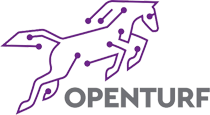The cloud promised agility and infinite scale, and it delivered. But for many organizations, that promise has come with a hidden tax: a growing, often-uncontrolled mountain of cloud costs. The race to deploy applications has prioritized speed over efficiency, leaving a crucial discipline—performance engineering—on the sidelines. This isn’t just a financial issue; it’s a strategic one. It’s time to shift our focus from merely making things fast to making them both fast and economically sustainable. This is the new frontier of performance engineering.

The New Reality: The Cost-Performance Matrix
In the past, the goal was simple: get the fastest response time possible. Now, with the granular pricing models of hyperscalers like AWS, Azure, and Google Cloud, we must consider a new matrix where cost is as important as speed. For example, a fintech startup in 2025 might have a real-time transaction service that handles millions of requests. Using an expensive, high-powered instance might provide sub-millisecond latency, but at an astronomical cost. A smarter approach is to use a less expensive, mid-range instance that still meets the Service Level Agreement (SLA) of 50-millisecond latency. The difference could be hundreds of thousands of dollars a year with no impact on the customer experience. This is the new frontier of performance engineering: finding the optimal balance where performance goals are met without unnecessary expenditure.
Contemporary illustrations
1. The Serverless “Cold Start” Conundrum
A global e-commerce brand, NeoMart, fully migrated its API to a serverless architecture to reduce costs. However, they soon discovered that a new feature—an AI-powered recommendation engine—was suffering from “cold starts,” where the first request after a period of inactivity was slow. The solution was not to increase the function’s memory (a costly choice), but to implement a simple pre-warming function. Every ten minutes, a scheduled task sends a non-intensive request to the function, keeping it active. This simple change eliminated cold starts and saved the company over $500,000 annually by avoiding the over-provisioning of resources.
2. Optimizing Data Pipelines with Cost-Aware ETL
A pharmaceutical company, BioGenix, uses a data lake for genomic research, running massive nightly Extract, Transform, Load (ETL) jobs. Their original scripts were designed for speed, indiscriminately processing terabytes of data. After a performance review, their engineering team implemented a cost-aware data pipeline. Instead of processing the entire dataset nightly, the new system identifies only the changed or new data using versioning and metadata. This dramatically reduced the volume of data processed, cutting their data processing costs by 60% and shortening the job runtime from six hours to under two.
3. Kubernetes Pods and Right-Sizing
A gaming company’s microservices were deployed on Kubernetes, but they were running into massive cloud bills. The problem was pod right-sizing. Their original deployment strategy requested more CPU and memory than the applications actually needed, leading to inefficient resource allocation. The team used a custom observability tool that analyzed real-time usage data. By adjusting the pod resource requests to match actual usage patterns, they reduced their cluster size by 30%, resulting in a $1.2 million reduction in their annual cloud spend without any performance degradation.
The discipline of performance engineering has evolved beyond raw speed. It is a strategic function at the intersection of technology and finance, focused on Cloud Cost Optimization. By adopting a mindset of efficiency and leveraging modern tools, companies can build high-performing applications that are also economically sustainable. This approach not only ensures a healthier bottom line but also frees up capital to invest in further innovation and strategic growth.
Is your cloud bill a mystery? It’s time to stop just monitoring performance and start engineering for efficiency. Contact us today for a cloud cost optimization review and discover how strategic performance tuning can transform your business.
